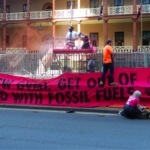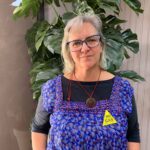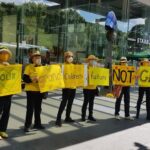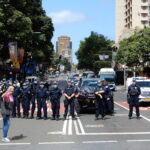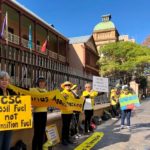Gamil Means No: An Interview With Gamilaraay Next Generation’s Ian Brown
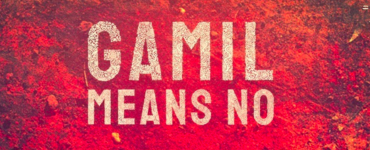
Gamil means “no” in Gamilaraay: the language spoken by the Gomeroi people. Situated on what is today described as north western NSW, the Gomeroi Nation is currently saying gamil to the proposed Narrabri Gas project.
In a statement released on 22 November, the Gomeroi Nation put both the federal and state government on notice that as its rights have not been recognised or respected, it is saying no to a gas invasion of its country.
The statement further explains that the Gomeroi Nation has not been consulted by any authority in regard to the plan to destroy its lands and water systems via a mammoth fossil fuel project, in much the same way no consent was given to take away its land 200 years ago.
And a fortnight later, young Gomeroi activists took to the streets as part of a national day of action. Led by Gamilaraay Next Generation in Sydney, the Gamil Means No protest brought the Sydney CBD to a standstill.
Steeped in climate denial
The Narrabri Gas project has long been in the pipeline. It was given renewed vigour, when Australian prime minister Scott Morrison included it as part of his post-COVID gas-driven economic recovery: a vision that completely denies the burgeoning climate crisis.
Despite the majority of the 11,000 submissions provided to the NSW Independent Planning Commission, it gave approval to the project, which involves Santos drilling 850 coal seam gas wells across 1,000 hectares of mainly the Pilliga Forest, which is all Gomeroi country.
Not only will this destroy wildlife and sacred sites, but the proposed gas operation site sits atop the Great Artesian Basin: one of the largest freshwater reserves in the world. And Santos plans on drilling the hundreds of wells straight through the basin to get to the gas below.
The federal and state Coalition governments are spruiking gas like it is some clean energy alternative, when it is nothing of the sort. Indeed, the methane involved in coal seam gas mining is 80 times more potent in its greenhouse effect, than coal produced carbon emissions.
Our country, our future
Gamilaraay Next Generation is a newly formed collective of young Gomeroi people. “We are the next generation of Gomeroi/Gamilaroi/Kamilaroi/Gamilaraay mob fighting for our rights and generations to come,” reads the group’s Facebook page.
In taking the Gamil Means No campaign to the streets, Gamilaraay Next Generation is not only calling for a halt to the destruction of Gomeroi country, but it’s also offering an alternative, which is a just transition to renewable energy.
Sydney Criminal Lawyers spoke to Gamilaraay Next Generation spokesperson Ian Brown about the devastation that the Narrabri Gas project would wreak, calls for the government to actually consult with the sovereign peoples, and how investment in renewable energy sources is the way to go.
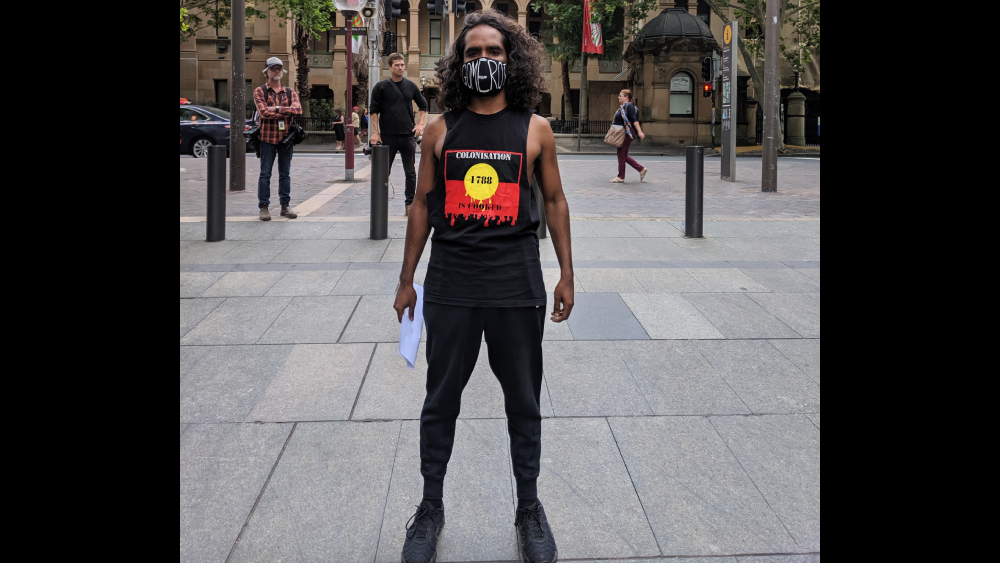
The Narrabri Gas project is set to drill about 850 coal seam gas wells across 1,000 hectares of mainly the Pilliga Forest. These wells will be drilled straight through the Great Artesian Basin.
Ian, this is all on Gomeroi Country. What’s at stake here for your people?
Everything is at stake. Our livelihood. Our connection to Country. The health and wellbeing of our country.
The Country does not belong to us, we belong to the land. And there’s only one lore, and that’s the lore of the land.
Our sacred sites are at risk of being destroyed, further disconnecting Gomeroi people from our culture and history, continuing on with the genocidal processes this colony has been engaged with since first contact.
Our flora and fauna are at risk. The number of koalas in their natural habitat is at risk of further decline over the next five years, and this is just one example of what will occur.
There’s a lot at risk. And part of the process of drilling – fracking – is that they inject chemicals straight into the ground to allow for shale reservoirs to release the gas. So, that injection of chemicals risks poisoning our natural water resource: the Great Artesian Basin.
We’ve already got a multitude of coal seam gas projects occurring up the east coast stemming into Queensland, and that land is also a part of the Great Artesian Basin underground water network.
The initial stages of this project have already been approved by the government. The next stage would see it jump up from 850 to potentially 1,500 wells.
There are gas wells up the top end of the Great Artesian Basin. So, if we have gas projects all over the east coast – literally along the whole basin – it’s going to jeopardise the wellbeing of the basin.
A lot of remote and rural communities live off the bore water. I’m from Moree, and we’re a sole bore water-run township. A lot of our drinking water resources come from the basin. So that would be affected.
The waste product coming from the gas project is going to have devastating effects on wildlife and the flora around Gomeroi Country. The fact that they’ve got proposals for the wastewater to run off into the natural river and creek system is just not good enough.
We have native animals that drink and source their food from those river and creek systems. We’ve got people that still fish frequently. Mob get a lot of their diverse protein from fishing these river systems, so our health is at risk.
There isn’t much water out there at the moment and if they’re going to inject the waste from the project into that river and creek system then everyone and everything is at risk.
It’s not just the people. It’s literally everything that comes from and lives off the land.
The Gomeroi Nation is standing up to both the federal and state government calling this out as a further colonial land grab, which will have devastating consequences.
What sort of consultation were the true custodians given?
There has been minimal consultation done with a select few individuals from the Gomeroi people, but this has been done to further divide the Gomeroi people and bring our sovereignty into question. There hasn’t been any transparency.
Despite the minimal consultation and opposition to the project, federal minister of environment Susan Ley still approved the Narrabri Gas project. This would not have been done without Gladys Berejiklian and Matthew Kean knowing.
In terms of land rights, they’re not recognising our sovereignty and nationhood. Sovereignty was never ceded.
Part of our traditional ways is everyone gets a say. We all know what’s going on, and everyone gets a say in it.
There’s been no transparency around the consultation that’s gone on with the federal government, the state government and then onto Santos and the wider Gomeroi area. This is not good enough.
What’s the Gomeroi Nation calling for?
We’re calling for the federal minister of environment, the premier of New South Wales and the NSW minister for environment and energy to sit down with us and hear how Gomeroi people feel about this.
As a nation, we’re looking for ways where we can gather the collective voice of all Gomeroi people and deliver that to the government.
It is important to Gamilaraay Next Generation that this process is done through consultation with our elders and our frontline Gomeroi warriors that came before us.
What’s happening right now on Country, in terms of resistance?
Ever since the project was announced, pushing close to a decade ago, there has been frontline resistance at the proposed gas mining sites.
There has also been a lot of social media presence around the resistance to this project. That’s been established via multiple online collectives, including: the Moree Ecological Holistic Information Centre, Stop Mining Gomeroi Country, and the Gomeroi Yinaar of Nharribaraay.
This has also come through our allies such as the Knitting Nannas Against Gas and the Narrabri chapter of Extinction Rebellion. And there has also been resistance from other groups with an invested interest in the Gomeroi area such as Lock the Gate.
There was opposition from the Narrabri townspeople and wider community, who made submissions to the NSW Department of Planning and Environment on the proposed Santos Narrabri Gas project. The majority – being 64 percent of the Narrabri local area – objected to the project.
Resistance is everywhere on Gomeroi Country, as we all pursue the same goal.
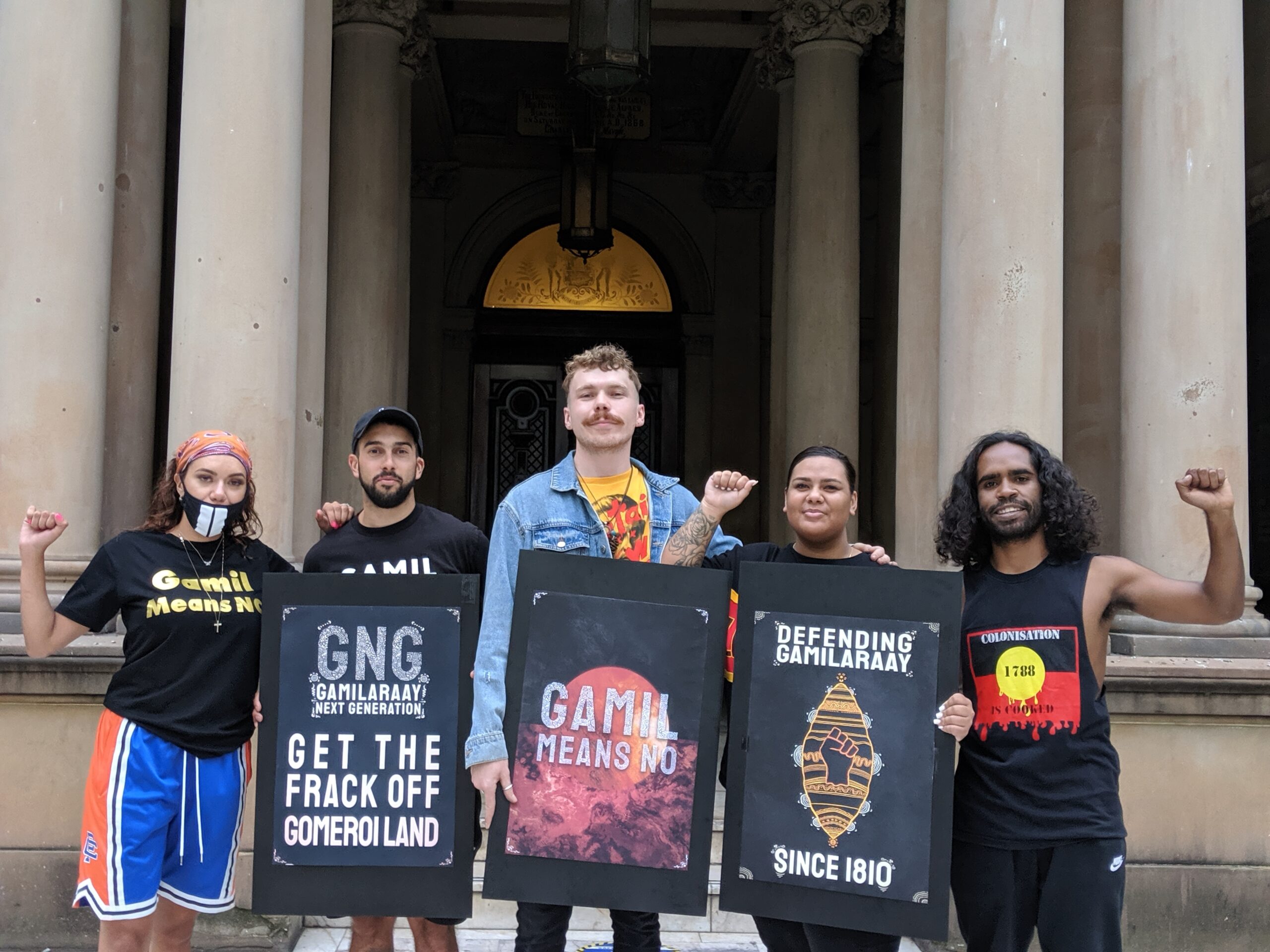
Last week, you were speaking at the Gamil Means No protest in Sydney. There were similar actions in Melbourne, Canberra and Brisbane. How were they received?
Overall, I believe the protests went well. We got confirmation from elders on how well we did and how proud our people are that young Gomeroi warriors are bringing attention to this on all platforms, whether that be social media, or the media more generally.
And you managed to shut down the middle of Sydney?
Yes, we did. We had opposition from the police. They were initially against us and were trying to get us to reroute our protest, when marching through Sydney.
There were warnings of potential legal action, in terms of taking us to the Supreme Court.
But they had no leg to stand on. As the liaison for Gamilaraay Next Generation, I’d negotiated for us to be conducting the protest as long as we didn’t interfere with traffic.
Our collective members agreed on the day that we’re not going to be told what to do by the continuing colonial threat, that being the police, as the representative of the ongoing process of colonisation.
We are not going to be told what to do because of our sovereignty we have to this land. Sovereignty was never ceded, and we will continue to fight for our right as sovereign peoples.
So, lastly, Ian, what’s the next step from here? How will the movement be going forward?
The movement is ongoing. There’s no stopping it.
We’re organising ourselves now, reaching out to more and more Gomeroi people and thinking about how we’re going to get the overall consensus as to how Gomeroi people feel in relation to Santos and the proposed gas mining project in Narrabri, and also how the government sees our sovereignty.
In the future, we want to go about our business in creating a foundation to give guidance to what Gomeroi people think about the project.
We’re also looking at how we want our sovereignty to be seen and acknowledged, and not just tokenistically, but legitimately.
We want to ensure that the government isn’t looking at us like people who don’t have any authority or vested interest in the outcome of our Country, because we do.
Coal seam gas and the gas-led recovery for the Australian economy are a kick in the gut, because at the end of the day, there are proven alternatives that don’t come as a detriment to the land, people or the native flora and fauna.
Renewables can create energy for our country moving forward and also the ability to stimulate an economic recovery.
We know at the end of the day that we live in a developed world where energy is very much needed because of the way society and technology has developed and will continue to evolve over time.
So, it’s about how we go about producing that energy, which really comes back to the government, both state and federal.
Right now, it’s trying to save money because these gas mining companies are already established. As far as renewables go, the government doesn’t want to invest money in setting it up.
You have to spend money to make money, initially the budget might be in deficit for a couple of years. But once you invest money into alternative energy sources that are more environmentally friendly and sustainable, this will stimulate the economy, create on-going employment and future employment opportunities.
The government supported the development of the fossil fuels industry in the beginning. They invested in power stations and other mechanisms to develop energy. If the government led that initiative years ago, why can’t it make this change now?
All Gamilaraay Next Generation members are workers and taxpayers. If we don’t get a say in where our tax money goes, then they’re not really representing us as a people.
We oppose anything happening on our Country without consultation and the overall approval from the Gomeroi people. That’s the bottom line.
If they, both corporates and government, want to do things on Gomeroi Country that affects Gomeroi people, our non-Indigenous counterparts and allies that live on Gomeroi Country, and included in the decision-making process, then they can Frack Off.
At the end of the day, they’re not representing the people that occupy Gomeroi Country: both Indigenous and non-Indigenous.
Gomeroi people have cared for that Country since time immemorial and we understand what is needed to care for Country.
If our concerns are not heard, then the damage which comes from these destructive projects will be beyond the point of repair. Then everyone will suffer the consequences.


